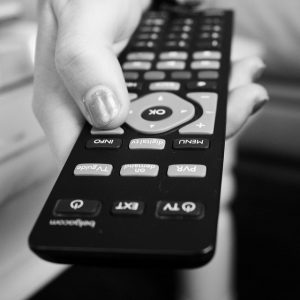
Following successful shows like Daredevil and Jessica Jones, Netflix recently added Luke Cage to their TV Marvel universe. Cage portrays a black super-strong superhero whose skin is bulletproof. Set in contemporary Harlem, New York, the show portrays various black and Latino characters in prominent roles. Despite praiseworthy reviews and mainstream popularity, some critics expressed their disapproval of the predominantly non-white cast, claiming that the show is racist and that Cage’s portrayal is “too black.” While the increase in minority characters has been a major stride for equal on-air representation, previous sociological research suggests other problems and pitfalls remain.
From 1978 to 1989, the number of black characters on prime time television doubled. Yet, minority presence was more likely to be found in comedic roles, such as the Cosby Show, rather than dramas. While there were more depictions of black and white relationships, these relationships were featured in more formalized settings such as the workplace, whereas relationships among whites took place within informal settings such as the home.
- Russell H. Weigel, Eleanor L. Kim, and Jill L. Frost. 1995. “Race Relations on Prime Time Television Reconsidered: Patterns of Continuity and Change.” Journal of Applied Social Psychology 25(3): 223-236.
Ethnic minority representation in the media has not suppressed the perpetuation of racist myths and stereotypes that further stigmatize these groups. While greater demand for blacks on TV were rooted in demands for social justice, subsequent television programs often over-depicted black criminality or problematized black culture. Latinos are also underrepresented in television, and when they are depicted, these portrayals are more likely to be more negative than portrayals of other racial groups. As a result, under-representation may lead audiences to believe that there are fewer minorities in the actual population.
- Herman Gray. 2013. “Subjected to Recognition” American Quarterly 65(4). 771-798.
- Valerie Adams-Bass. 2014. “Measuring the Meaning of Black Media Stereotypes and Their Relationship to the Racial Identity, Black History Knowledge, and Racial Socialization of African American Youth.” Journal of Black Studies 45(5): 367-395.
- Jake Harwood and Karen Anderson. 2002. “The Presence and the Portrayal of Social Groups on Prime-Time Television.” Communication Reports 15(2): 81-97.
Even programs like The Cosby Show that featured predominantly positive images of middle-class blacks can produce unintended consequences. Interviews with middle-class black families suggested that many viewed the doctor-lawyer duo between the Huxtable parents as a role model for the black community. On the other hand, many middle-class blacks criticized the show for depicting an unrealistic characterization of a black family that seemingly never endured any racial problems. Furthermore, these depictions of black middle-class families may have suggested to white audiences that blacks could make social and economic strides if they worked as hard as the Huxtables.
- Leslie B. Inniss and Joe R. Feagin. 1995. “The Cosby Show: The View from the Black Middle Class.” Journal of Black Studies 25(6): 692-711.

Comments